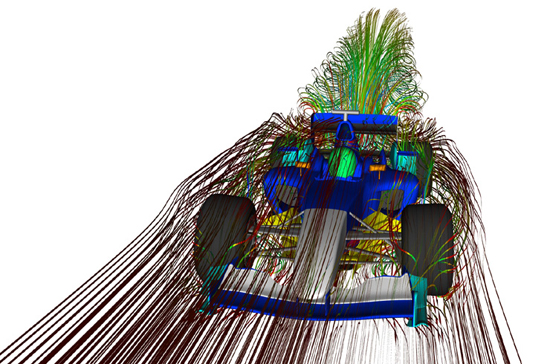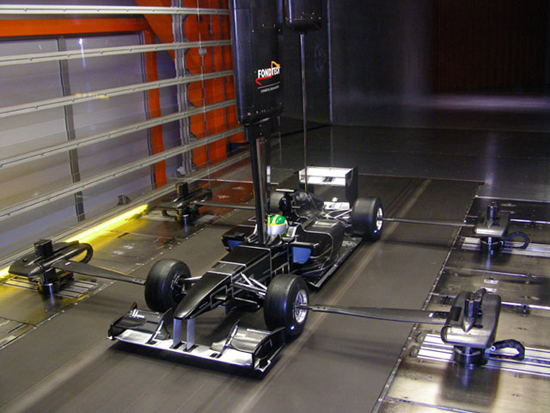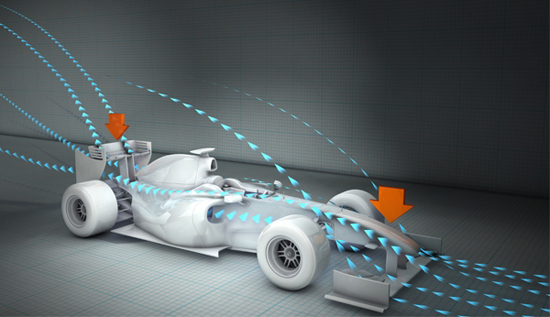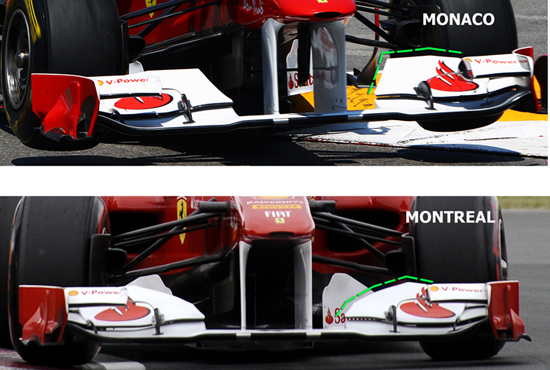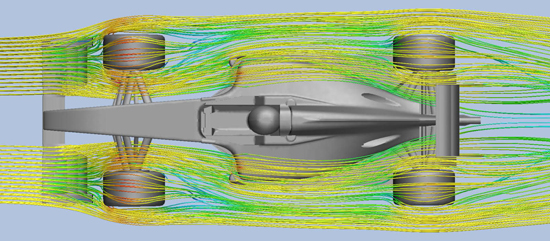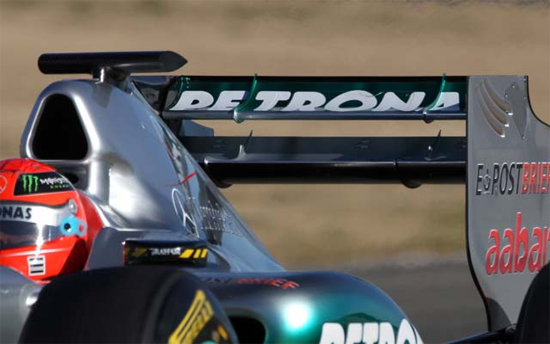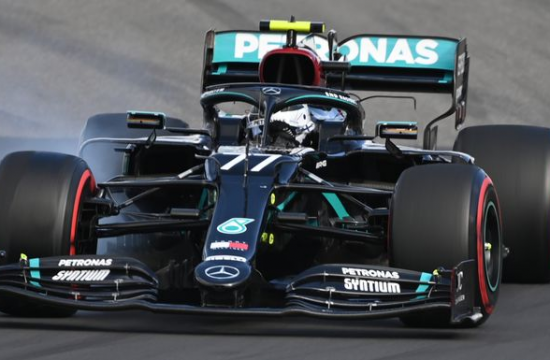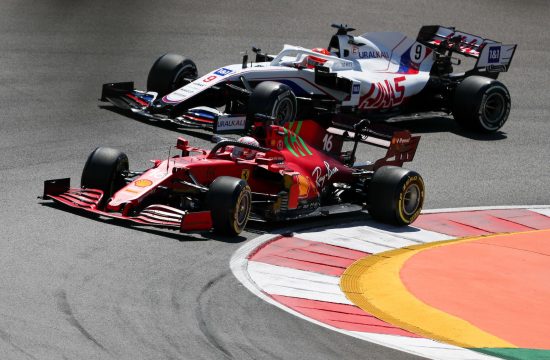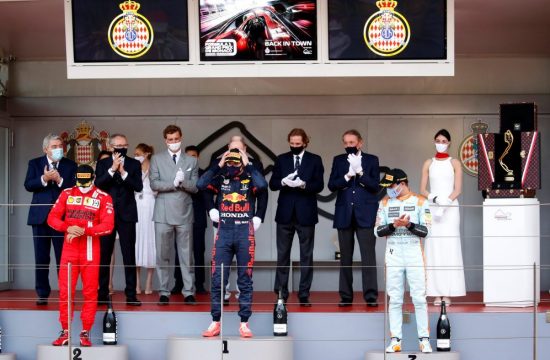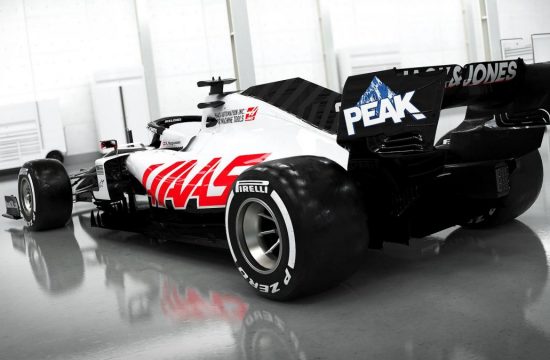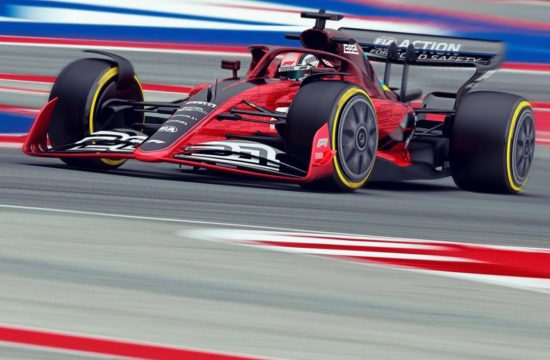With all F1 teams using naturally aspirated engines of the same displacement, there’s little else a team can do to develop more power once they’ve maximised an engine’s potential. To increase a car’s performance “on track” further, aside from brakes and suspension, this leaves the second most important aspect in designing the perfect racing machine: Aerodynamics.
In Layman’s Terms, aerodynamics is the study of how air in motion interacts with a solid object, usually focussing on how the object can be made capable of passing through the air with the least resistance. However, in F1, aerodynamics plays a bigger role, and the air flowing over the car’s body is taken advantage of and used to help other performance features, such as guiding air directly into the side engine ventilation pods and brake cooling ducts. Top teams employ a staff of up to a hundred people focusing purely on designing components that’ll shave just hundredths of second from a lap time. If these components, combined with the overall shell design can knock just a couple of tenths of second off a lap, it may be enough to jump ahead of a team in qualifying and racing.
To put the importance of testing in the simulated conditions of a wind tunnel into context, Ferrari have said their 2014 campaign will be compromised, as they need to update their own tunnel and resort to using Toyota’s.
Downforce
“Aerodynamic grip” is the vertical pressure created by the aerodynamic characteristic of the car to maximise the “mechanical grip” from the tyres and suspension.
In the same way an aeroplane’s wings (aerofoils) are designed to create lift, an F1 car’s front and rear wings are reversed to force the car onto the track for better grip around tight corners – this means a slightly tweaked setup for varying tracks. For example, the twisty street circuit of Monaco would require maximum downforce to keep the car planted on the fine line between winning and ending up in the barriers. Although downforce compromises top speed, some tracks require more than others, although the DRS (Drag Reduction System – I’ll come to this later) allows the car a momentary gain with the mechanical adjustment of the rear wing.
Front
An F1’s conical nose is designed to channel air underneath the chassis, and whilst the connected front wing adds downforce to maximise “mechanical grip”, the end plate’s job is to manage airflow around the tyres, and the upper flaps to manage airflow over the tyres. Combined with the wind tunnel’s airflow, teams now use a rolling road to create a more realistic environment, as the car’s wheels in motion create their own turbulence.
Body
Along with the conical nose, the body is designed to cut through the air with as little wind resistance as possible. Unlike a streetcar, which resembles the cross-sectional shape of an aeroplane wing – the air travelling faster over the top and slower underneath causes lift – an F1 car is designed to reverse this effect by channelling and accelerating the air underneath the chassis before a rear diffuser. Once this accelerated air hits the diffuser, the air pressure rises, thus reducing the car’s wake turbulence – this is important and required in the FIA rules, as a car following in this turbulence is seriously compromised aerodynamically, making it almost impossible to overtake.
Rear
By the time the air reaches the rear of the car, the front wing, front wheels, side mirrors, the driver’s helmet, side ventilation pods and exhaust system have affected it. This means the rear wing is less aerodynamically efficient, although to make matters worse for the designers, the rear needs to develop over twice the downforce to maintain handling and balance. To help with this much downforce, the rear wing has a much larger aspect ratio, and features more than one element to develop the extra force. Just as you can adjust the front wings, the rear is fully functional and can be adjusted accordingly to suit different track environments.
I touched briefly on DRS (Drag Reduction System) earlier, and although it is self-explanatory, this system has a major effect in racing for position. After three racing laps, DRS is enabled. This means if a car is within one second of the car in front within a DRS section of the track, the driver can open a flap on the rear wing (see pics above), reducing the downforce, resistance and drag. This ultimately ends in a pass or with the drivers neck and neck by the next corner – a great viewing spectacle.
The next time you hear the word “upgrades” watching F1, it usually pertains to a tweaked aero component(s). Many painstaking hours have gone into this piece of sculpted carbon fibre, and even if it only shaves a tenth of a second from a lap time, it has done its job well – this is the insanely technological and complex world of F1.

